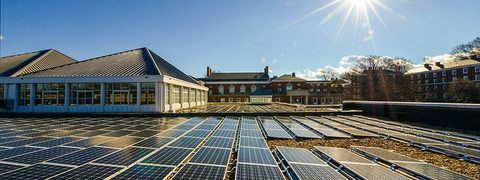
Information technology (IT) is the study and use of electronic devices that can store, process, and share data, such as computers, phones, and even some copy machines. Throughout its lifespan, IT equipment greatly affects the environment in both positive and negative ways. In order to fully optimize IT's impact on the environment by maximizing the positive potential and minimizing the negative effects of IT, one must first fully understand the details of how IT impacts the fight against climate change.
Despite what many people think, the production stage is by far the most detrimental portion of electronics' lifecycle. It requires the extraction and manufacture of large quantities of rare minerals, contributing to the depletion of Earth's resources. For many IT devices, the production stage requires more energy than the rest of the device's lifespan combined. Furthermore, the improper disposal of IT equipment results in severe toxic chemical pollution and the waste of rare resource, including gold, silver, and palladium. Fortunately, many of these negative effects can be decreased considerably by better electronic recycling guidelines and increased renewable energy practices.

Furthermore, IT also has the potential to generate positive benefits for the environment by increasing data monitoring and analysis of environmental impacts, encouraging sustainable innovation and technological development, and increasing overall efficiency throughout society.
The overall goal of sustainable IT practices is to optimize IT's overall environmental impact by reducing the negative effects of IT equipment on the environment while maximizing IT's positive ecological benefits. Fortunately, there are many ways to use technology in accordance with sustainable efforts. Using innovative technologies such as smart power strips and energy setting systems can help reduce global carbon output levels. Storing and sharing information using large cloud services reduces material waste and often decreases overall data center energy consumption. Learning about and incorporating data monitoring and analysis into workplaces allows for companies to quickly find areas of inefficiencies, such as inefficient server closets, resulting in more efficient offices. For more tips on incorporating sustainable IT practices, visit our resources page. Ideally, the world will reach a balance between these negative and positive impacts, so that technology can exist as a net benefit to the environment!
